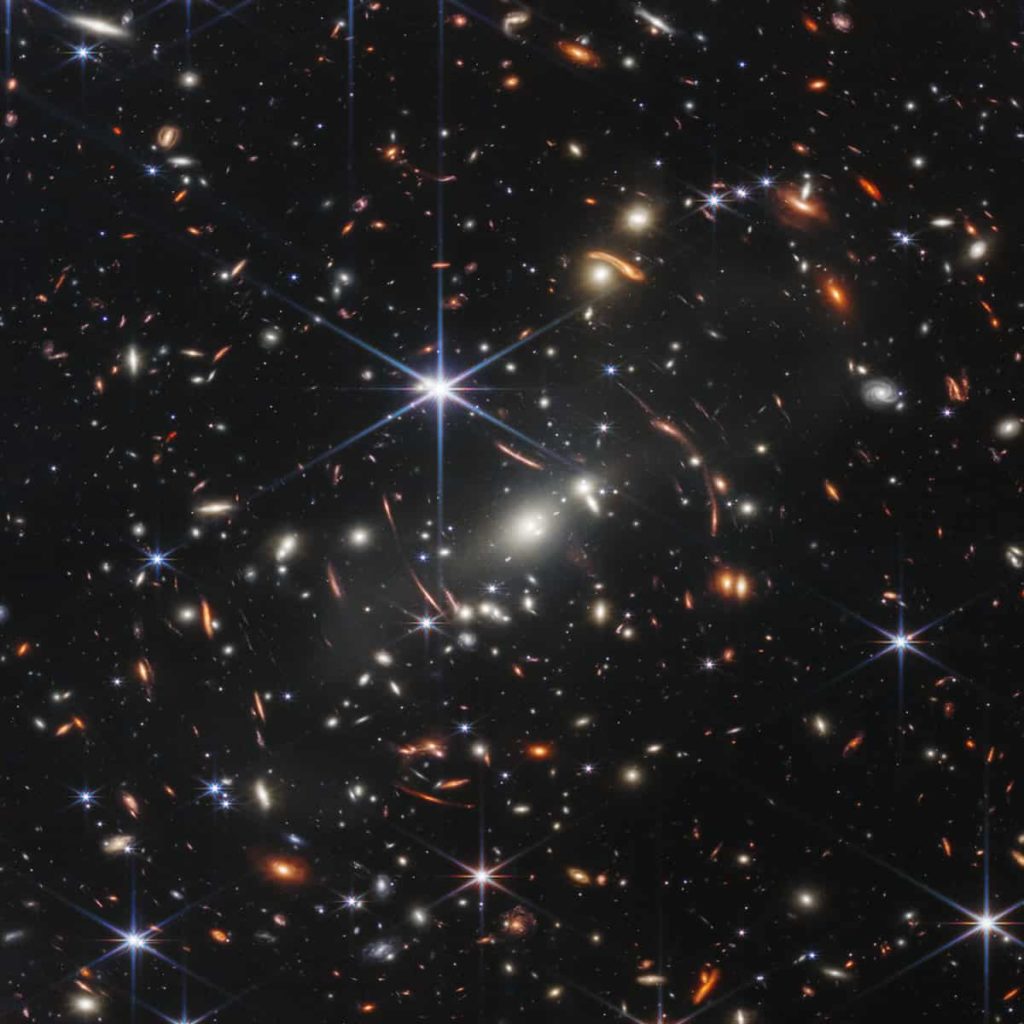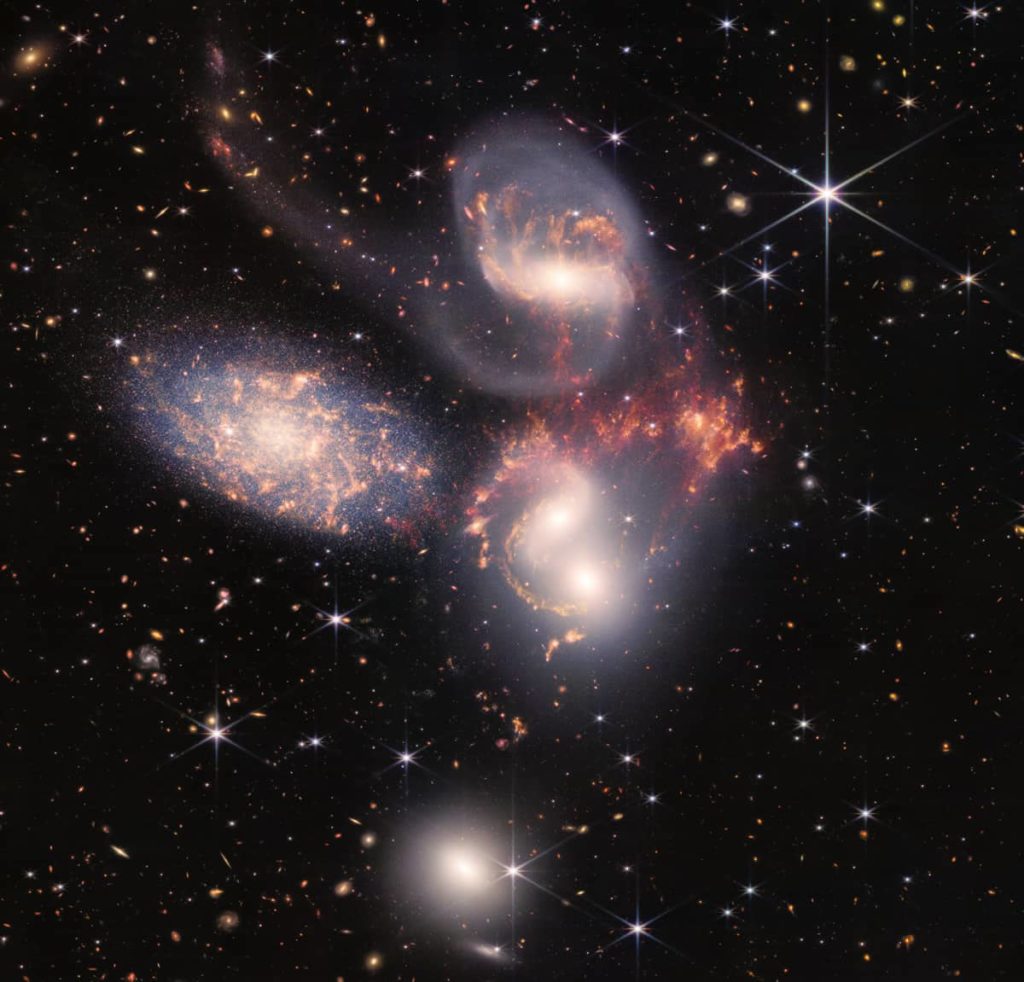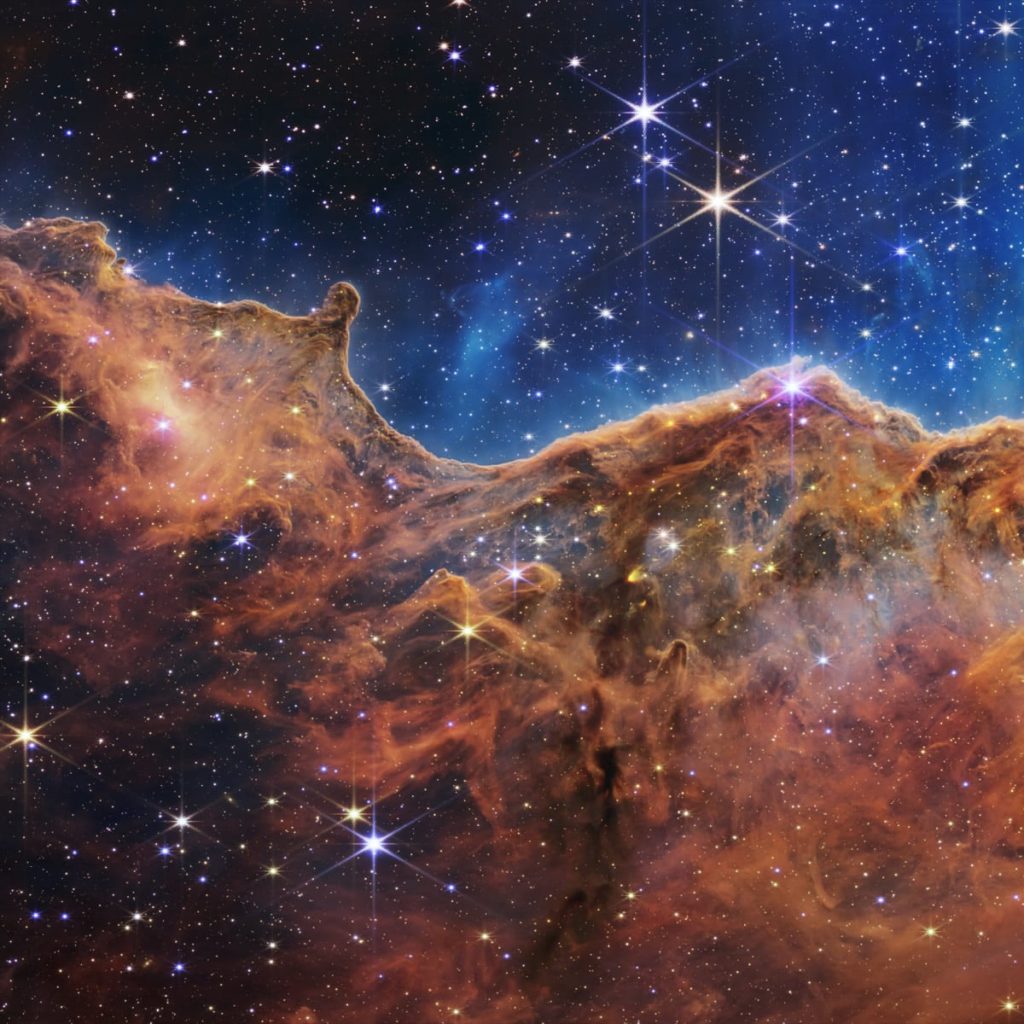
NASA shared some of the first images produced by its James Webb Space Telescope (JWST) today, offering humanity a high-resolution glimpse of some of the more far-reaching and previously hidden elements of the universe.
There are five images in total, including Deep Field, the “deepest infrared images of the universe yet”; Stellar Death, a photo of a dying star; and Star Forming Region, a “glittering landscape” that’s been described as cosmic cliffs. The JWST’s ability to analyze atmospheres from far-off planets has also been demonstrated in a photo for “WASP-96 B,” an Exoplanet that apparently features water signatures.
Deep Field: SMACS 0723
NASA’s James Webb Space Telescope has produced the deepest and sharpest infrared image of the distant universe to date. Known as Webb’s First Deep Field, this image of galaxy cluster SMACS 0723 is overflowing with detail.
Exoplanet: WASP-96 B
NASA’s James Webb Space Telescope has captured the distinct signature of water, along with evidence for clouds and haze, in the atmosphere surrounding a hot, puffy gas giant planet orbiting a distant Sun-like star.
Stellar Death: Planetary Nebula NGC 3132
The dimmer star at the center of this scene has been sending out rings of gas and dust for thousands of years in all directions, and NASA’s James Webb Space Telescope has revealed for the first time that this star is cloaked in dust.
Interacting Galaxies: Stephan’s Quintet
Stephan’s Quintet, a visual grouping of five galaxies, is best known for being prominently featured in the holiday classic film, “It’s a Wonderful Life.” Today, NASA’s James Webb Space Telescope reveals Stephan’s Quintet in a new light. This enormous mosaic is Webb’s largest image to date, covering about one-fifth of the Moon’s diameter. It contains over 150 million pixels and is constructed from almost 1,000 separate image files. The information from Webb provides new insights into how galactic interactions may have driven galaxy evolution in the early universe.
Star Forming Region: NGC 3324 In Carina Nebula
This landscape of ‘mountains’ and ‘valleys’ speckled with glittering stars is actually the edge of a nearby, young, star-forming region called NGC 3324 in the Carina Nebula. Captured in infrared light by NASA’s new James Webb Space Telescope, this image reveals for the first time previously invisible areas of star birth.
These photos were recorded and stored on the JWST’s SSD, which has a capacity of only 68 GB. This seems like an inadequate amount of storage for an advanced telescope that cost $10 billion to build, but the specification begins to make sense based on the project’s early start in the 1990s, not to mention how specialized it must be to handle the extreme conditions of space (e.g., radiation).
The data rate limits of the SSD, which NASA calls a solid state recorder, is detailed on the JWST’s user documentation site, which includes a page describing the unique device.
The rate at which science data can be written to the SSR is regulated by the ISIM Command and Data Handling subsystem (ICDH). The maximum ICDH sustained data rate is about 48 Mbits per second, including data packetization overheads. This corresponds to about six 2048 × 2048 full frame image files every 10.7 s. The actual data rate depends on the number of detectors simultaneously in use, their exposure parameters, and the precise timing of when their exposure readouts arrive in the ICDH for processing. The number of detectors in use at any one time could be as large as 14. For example, observations with both NIRCam modules (10 detectors), along with parallel NIRSpec observations (2 detectors), and the FGS for guiding would be sending data from 13 detectors to the ICDH. The relative timing of the arrival of data packets is unpredictable, and this uncertainty is factored into the 48 Mbps limit.
To prevent the loss or corruption of packets, the APT templates set the number of detectors in use and the rate at which data is generated. For example, in the NIRCam rapid readout mode, only one NIRCam module (five 2K × 2K detectors) can be used with Ngroups = 1. To use both modules (ten 2K × 2K detectors) in rapid readout mode requires Ngroups = 2. Combinations using multiple instruments must stay within the 48 Mbps limit.
Manufactured by Northrop Grumman, Ball Aerospace, and L3Harris, the JWST is the most powerful telescope that has ever launched into space, one that’s advanced enough to capture far-away galaxies that even the Hubble can’t detect. One of its most recognizable features is its 18 hexagonal mirror segments, which comprise gold-plated beryllium.
Source: NASA





